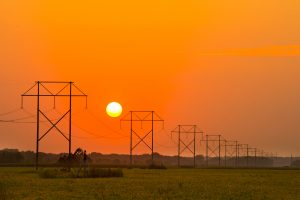Iowa environmental groups — inspired by a successful campaign in Minnesota — are asking the U.S. Environmental Protection Agency to step in and protect drinking water in northeast Iowa from agricultural runoff.
The petition was announced this week, hours after the Iowa Environmental Protection Commission unanimously approved largely status quo rules governing animal feeding operations.
“The Environmental Protection Commission has once again proven who they really serve — not the Iowa public, but big ag polluters,” said Alicia Vasto, water program manager for the Iowa Environmental Council, one of the 13 groups that filed the petition with the EPA Tuesday.
The petition asks the EPA to use its emergency authority to intervene in Iowa to “address groundwater contamination that presents an imminent and substantial endangerment to the health of residents in northeastern Iowa.”
“The well-documented nitrate contamination of drinking water in the karst region necessitates prompt and decisive EPA emergency action,” the petition states. “Elevated levels of nitrate in drinking water are known to increase the risk of a wide range of very serious health problems …”

According to the National Institutes of Health, nitrate and nitrite ions are widespread in the environment and occur naturally in plant foods and water, however they are also regularly found in inorganic fertilizer. A 2018 review of 30 academic studies showed a link between ingesting nitrate from drinking water and adult diseases, including colorectal cancer. Other University of Iowa studies show nitrate consumption may cause bladder and ovarian cancer in older women, The Gazette reported last month.
Nitrate is found at potentially harmful levels in 1-in-20 Iowa public drinking water systems and in more than 12,000 private wells in Iowa.
The petition focuses on Iowa’s Driftless region, where porous karst terrain makes streams and groundwater particularly vulnerable to fertilizer or manure runoff.
Just across the state border to the north, the EPA in November told the Minnesota Pollution Control Agency to develop a plan for addressing nitrate levels in drinking water sources in southeastern Minnesota. This EPA demand came six months after environmental groups in Minnesota filed a petition comparable to what Iowa groups filed Tuesday.
“We’ve seen similar increases in nitrate in drinking water sources just like in Minnesota,” said Michael Schmidt, an attorney for Iowa Environmental Council. “We would expect the EPA to do at least as much in Iowa.”
Other groups included on the petition are: Allamakee County Protectors — Education Campaign, Center for Food Safety, Environmental Law & Policy Center, Environmental Working Group, Food & Water Watch, Iowa Alliance for Responsible Agriculture, Iowa Citizens for Community Improvement, Izaak Walton League of America — Iowa Division, Sierra Club Iowa Chapter, Socially Responsible Agriculture Project, Iowa Coldwater Conservancy, and Trout Unlimited — Iowa Driftless Chapter 717.
11 Iowans ask for tougher rules on CAFOs
Before approving revisions to Chapter 65 of Iowa’s Administrative Rules, the Iowa Environmental Protection Commission on Tuesday held a public hearing at which 11 people asked for tougher regulations on how developers build feeding operations and dispose of manure.
“Iowa has over 10,000 factory farms that contribute to over 750 impaired waterways,” Tom Mohan, of Cedar Rapids, said, referencing an often-repeated number from environmental activist organizations. “We believe clean water is a human right.”
Three people representing agricultural groups spoke in favor of the rules.

“The Iowa Cattlemen’s Association supports the rules you have before you,” said Eldon McAfee, an attorney with the Brick Gentry law firm and a former dairy farmer. He said the rules protect soil and water without infringing on farmers’ rights.
Commission Chair Harold Hommes asked DNR staff whether it was possible to change the proposed rules at Tuesday’s meeting. Staff said any major changes would start the rules review process over again.
Karst protections stripped from an early rules draft
The DNR’s first version of the Chapter 65 revision last fall included additional requirements for feeding operations in the karst terrain of northeast Iowa.
The version released in September said new CAFOs proposed to be built between 5 and 15 feet from karst would have been required to have a 5-foot continuous layer of low-permeability soil, nonsoluble bedrock or a 2-foot synthetic clay liner.
However, revisions sent to the EPC in November removed those additional separation requirements after the Governor’s Office told the DNR the proposed revision violated an executive order from Gov. Kim Reynolds that barred more restrictive rules.
One change that remained in the final version says the DNR will adopt a 100-year flood plain map so developers will know where feeding operations can’t be built.


